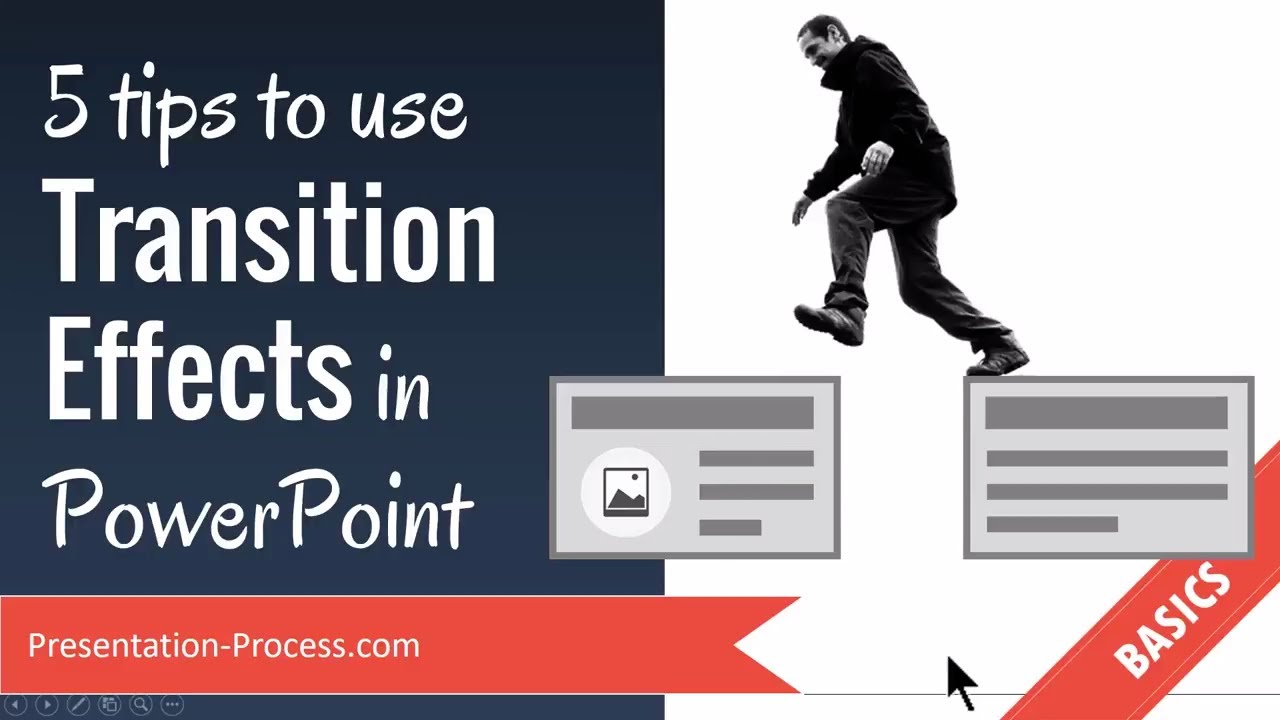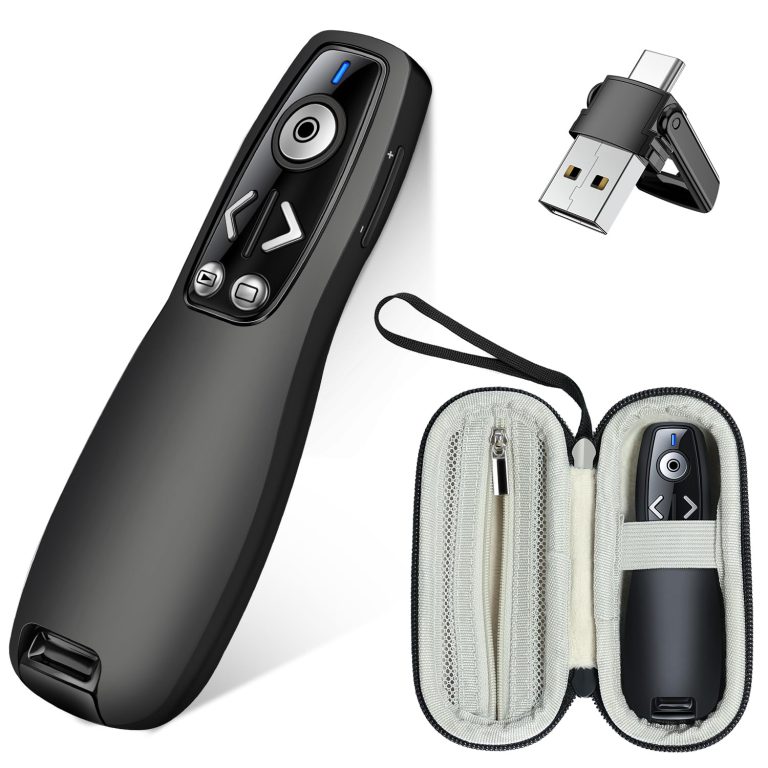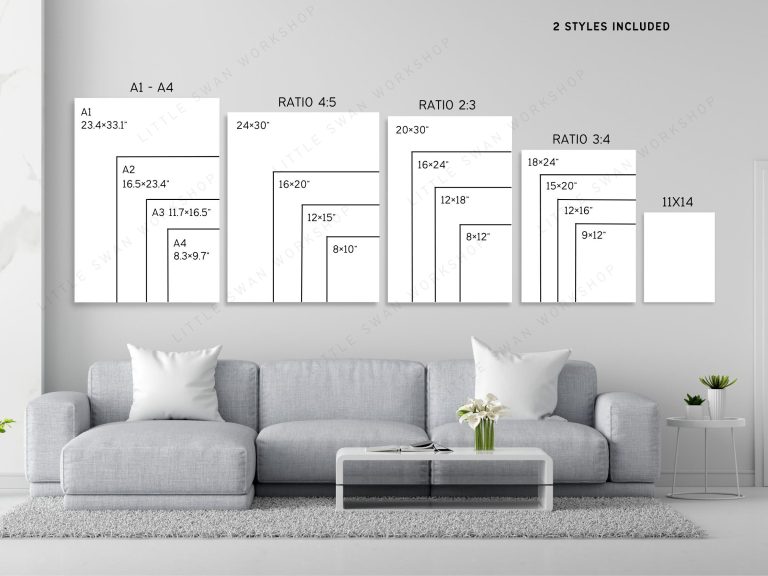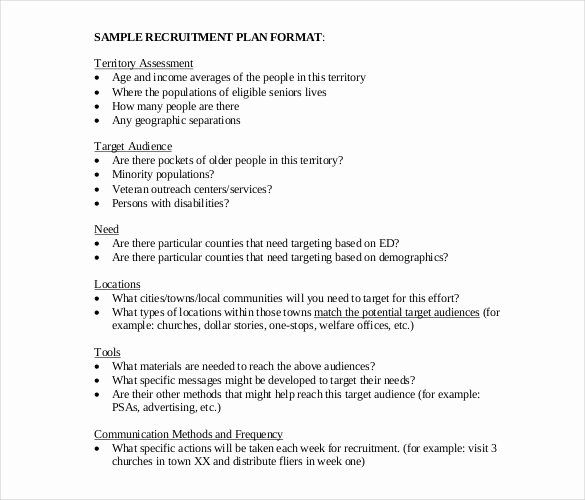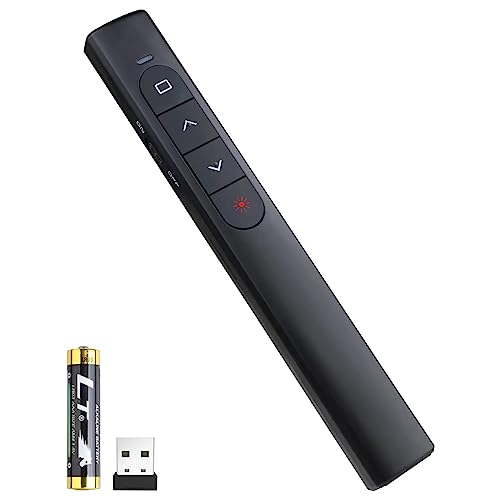Transition in A Presentation
Transition in a presentation helps smoothly connect ideas and guide the audience from one topic to another, improving the flow and comprehension. When used effectively, transitions can maintain engagement and facilitate understanding.
We will explore the importance of transitions in presentations, discuss different types of transitions, and provide practical tips for mastering their usage. Understanding these strategies will help you deliver a seamless and coherent presentation that effectively communicates your message. So let’s dive in and learn how to enhance your presentation through strategic transitions.
The Importance Of Transition In A Presentation
The Importance of Transition in A Presentation
In a presentation, transitions play a crucial role in creating a seamless flow of ideas and enhancing audience engagement and comprehension. Effective transition ensures that your message is delivered effectively, leaving a lasting impact on your audience. Let’s explore the importance of transition in more detail.
<h3> Enhancing Audience Engagement and Comprehension </h3>
Transitions in a presentation help to capture and maintain your audience’s attention. By smoothly connecting one idea to another, transitions ensure a continuous flow of information, making it easier for your audience to follow along. Engaged listeners are more likely to understand and retain the key points of your presentation, therefore, making the transition between ideas is essential for effective communication.
<h3> Creating a Smooth Flow Between Ideas </h3>
A well-structured presentation should have a logical progression of ideas. Transitions act as bridges between different concepts, making the transition between one idea to the next seamless. By using transition words and phrases, such as “however,” “in addition,” or “furthermore,” you can guide your audience smoothly from one point to another, ensuring they can easily connect the dots and comprehend your main message.
<h3> Maintaining an Organized Presentation Structure </h3>
Transitions not only enhance audience understanding but also contribute to the overall organization of your presentation. By incorporating transitional elements, you can create a clear and logical structure for your content. Whether you choose to use bullet points, tables, or numbered lists, these visual cues make it easier for your audience to follow the flow of your presentation and stay focused on the main ideas you are presenting.
In conclusion, transition in a presentation is of utmost importance for various reasons. It enhances audience engagement and comprehension, creates a smooth flow between ideas, and maintains an organized presentation structure. By paying attention to transitions and effectively incorporating them into your presentation, you can deliver a powerful and memorable message that resonates with your audience.
Types Of Transitions
Transitions play a crucial role in a presentation as they help to establish a smooth flow between different ideas and topics. By using the right transitions, you can ensure that your audience stays engaged and follows your storyline effortlessly. In this section, we will explore two main types of transitions: verbal transitions and visual transitions.
Verbal Transitions
Verbal transitions refer to the use of spoken language to guide your audience through various sections of your presentation. By carefully choosing your words and phrases, you can effectively signal a change in topic and link ideas together.
Signaling a Change in Topic
To signal a change in topic, you can use phrases such as:
- “Now that we have discussed [previous topic], let’s move on to [new topic].”
- “Shifting gears, let’s explore [new topic].”
- “Next, we will delve into [new topic].”
Linking Ideas
To link ideas and ensure a smooth flow between them, you can use transitional phrases like:
- “Moreover, [additional information].”
- “Furthermore, [further point].”
- “In addition to that, [related idea].”
Visual Transitions
Visual transitions involve the use of visuals and slide animations to enhance the visual experience of your presentation. By using appropriate slide transitions and visual cues, you can effectively guide your audience’s attention and emphasize key points.
Using Slide Animations and Effects
Slide animations and effects can add a dynamic element to your presentation. By using animations such as fade-ins, slide-ins, or zoom-ins, you can reveal information in a visually appealing and engaging manner. However, it’s important to use animations sparingly and only when they add value to your content.
Using Visual Cues to Guide the Audience
Visual cues, such as arrows, colors, or highlighting, can help direct your audience’s attention to specific areas of your slides. For example, you can use arrows to indicate the flow of information or use bold colors to highlight important points. These visual cues act as signposts, ensuring that your audience does not miss any important information.
Strategies For Transitioning Effectively
Clear and concise language
One of the most crucial strategies for transitioning effectively in a presentation is to use clear and concise language. By using simple and easily understandable words, you can ensure that your audience stays engaged and follows along with your message. Using complex or technical terms may confuse and alienate your listeners, leading to a loss of interest and comprehension. Keep your language straightforward and avoid unnecessary jargon and acronyms that might not be familiar to everyone. By communicating your ideas clearly, you will enhance the flow and cohesiveness of your presentation.
Utilizing transitional words and phrases
Transitional words and phrases serve as essential signposts in your presentation, guiding your audience from one point to the next. These words and phrases, such as “however,” “moreover,” or “on the other hand,” help to create a smooth and logical flow between different ideas or sections of your talk. By incorporating these transitional cues, you can effortlessly transition from one topic to another, ensuring that your audience can easily follow your train of thought.
Avoiding jargon and complex terminology
One common pitfall in presentations is the overuse of jargon and complex terminology. While it may seem impressive to use specialized language, it can actually hinder your communication with a broader audience. Avoid jargon and complex terms that might not be familiar to everyone. Instead, opt for plain language that is easily understandable by all attendees. By using inclusive and accessible vocabulary, you can ensure that your transitions are smooth and that your message resonates with a diverse audience.
Proper timing and pacing
The timing and pacing of your transitions play a crucial role in keeping your audience engaged throughout your presentation. Rapid transitions can be confusing and overwhelming, while excessively long pauses can lead to disinterest. Strive for a balanced rhythm, allowing enough time for your audience to process the information before moving on to the next point. Practice your presentation to ensure that your timing and pacing align with the overall flow of your talk.
Allowing pauses for emphasis
Pauses are powerful tools for emphasizing key points in your presentation. When transitioning between sections, consider incorporating intentional pauses to allow your audience to digest the information and reflect on its significance. Pauses can create anticipation, emphasize important ideas, and provide a moment of mental rest. By strategically using pauses, you can elevate the impact of your transitions and enhance the overall delivery of your presentation.
Timing transitions with slide changes
One effective technique for smooth transitions in a presentation is synchronizing your verbal transitions with your slide changes. By coordinating your spoken words with visual cues, you create a seamless connection between your speech and your slide content. This synchronization helps your audience follow along effortlessly, reinforcing the message and ensuring a cohesive experience. Practice your presentation to ensure that your verbal and visual transitions align smoothly.
Visual aids and cues
Visual aids and cues can significantly enhance the effectiveness of your transitions. These can include images, graphs, charts, or diagrams that visually represent the information you are presenting. Visual aids not only reinforce your message but also serve as natural transition points between different sections. By strategically placing these visual cues throughout your presentation, you can guide your audience through your content seamlessly and maintain their attention.
Using visuals to reinforce transitions
When transitioning between topics or ideas, incorporating relevant visuals can reinforce your message and capture your audience’s attention. Visuals can include images, infographics, or slides with key points written in a visually appealing way. By utilizing visuals that directly relate to your transitions, you create a visual connection that reinforces your verbal communication. This combination of auditory and visual stimuli enhances the impact of your transitions and facilitates better understanding and retention of information.
Incorporating relevant images and graphs
To make your transitions even more effective, consider incorporating relevant images and graphs that support your main points. Images and graphs have the power to convey complex information in a visually appealing and easily digestible manner. They can help your audience better grasp concepts, data, or statistics you are presenting. Ensure that the images and graphs you use are relevant, clear, and visually engaging. This will not only enhance your transitions but also make your presentation more memorable and impactful.
Incorporating Transition Techniques
Transition Phrases and Expressions
Transition phrases and expressions are a powerful tool for creating a smooth and engaging flow in your presentation. These handy phrases act as signposts, guiding your audience through the different sections and ideas. By incorporating transition phrases and expressions, you can ensure that your presentation feels well-structured and coherent.
Introducing a New Topic or Idea
Introducing a new topic or idea in your presentation requires finesse. You want to capture your audience’s attention and make them curious about what’s to come. An effective way to do this is by using phrases such as:
- “Now, let’s delve into”
- “Next, we’ll explore”
- “Turning our attention to”
- “Shifting gears, we have”
Summarizing Key Points
Summarizing key points is crucial for reinforcing your message and helping your audience remember the most important information. To effectively summarize, consider using phrases like:
- “In summary”
- “To recap”
- “To sum up”
- “To conclude”
Storytelling
Storytelling is a captivating way to engage your audience and make your presentation memorable. By incorporating narratives, you can use transitions that seamlessly take your audience from one section to another. For example:
“Imagine this: You’re walking through a bustling city street when suddenly…”
“Picture this: A small team of innovative entrepreneurs faced a daunting challenge…”
“Let me share a story that perfectly illustrates the importance of…”
Using Narratives to Transition Between Sections
To create a cohesive storyline throughout your presentation, you can use narratives to transition between sections. By connecting your ideas through a compelling story, you can keep your audience engaged and help them understand the bigger picture. For instance:
- “In our previous section, we discussed the challenges faced by a small team of entrepreneurs. Now, let’s explore how they overcame those challenges and achieved success.”
- “Earlier, we talked about the impact of environmental pollution. Now, let’s dive into solutions that can help mitigate this issue.”
- “We’ve seen the importance of setting clear goals. Now, let’s examine how we can create an actionable plan to achieve those goals.”
Structural Transitions
Organizing your presentation with clear sections is essential for clarity and coherence. By including structural transitions, you can ensure a seamless flow between these sections. Consider using phrases like:
- “Moving on to the next section”
- “Now, let’s turn our attention to”
- “Transitioning from X to Y”
- “Let’s shift gears and explore”
Creating Smooth Transitions Between Sections
To maintain an engaging rhythm throughout your presentation, it’s crucial to create smooth transitions between sections. This prevents your audience from feeling disjointed and confused. Here are some techniques to achieve smooth transitions:
- Use transitional phrases and expressions
- Reinforce connections between ideas
- Use visual cues such as slides or infographics
- Provide a brief overview before moving to the next section
By incorporating these transition techniques, you can create a presentation that flows smoothly, engages your audience, and leaves a lasting impact. Remember to use transitional phrases and expressions, introduce new topics effectively, summarize key points, employ storytelling, utilize narratives to transition between sections, and create a cohesive storyline throughout your presentation. Additionally, focus on structural transitions to organize your presentation with clear sections and ensure smooth transitions between them.
Tips For A Smooth Transition Delivery
Transitioning between different parts of a presentation is crucial for maintaining the flow and engagement of your audience. A seamless transition can help keep your audience focused and interested in what you have to say. Here are some tips to help you deliver transitions smoothly:
Practicing transitions
Practicing your transitions can make a significant difference in the overall delivery of your presentation. Consider jotting down key phrases or words to help you remember the flow from one idea to the next. By rehearsing these transitions beforehand, you can ensure that they come across confidently and naturally.
Rehearsing timing and delivery
Timing is crucial when it comes to transitions. You want to make sure that you allow enough time for your audience to process the information before moving on to the next point. Rehearsing your timing and delivery will help you strike the right balance, ensuring that your transitions are neither rushed nor too lengthy.
Ensuring smooth transitions without hesitation
Avoiding hesitation during transitions is important for maintaining a smooth delivery. Confidence plays a key role in keeping your audience engaged, so make sure to practice your transitions and become familiar with the material. This will help you deliver your points smoothly, without any unnecessary pauses or stumbling.
Engaging the audience
A seamless transition is an opportunity to engage your audience further. Use your transitions as a chance to ask questions, share anecdotes, or provide examples related to the upcoming topic. By doing so, you can captivate your audience’s attention and create a connection between different parts of your presentation.
Building anticipation for upcoming points
Transitions can also be used to build anticipation for what is to come. Provide a brief preview or teaser of the next point to spark curiosity and keep your audience intrigued. This can create a sense of anticipation and excitement, making your presentation more memorable and impactful.
Encouraging participation through questions and discussions
One way to keep your audience engaged during transitions is to encourage their participation. Ask thought-provoking questions related to the previous topic, or initiate brief discussions that relate to the upcoming point. This not only ensures active participation but also helps your audience connect ideas and retain information more effectively.
Remember, transitioning in a presentation is not just about smoothly moving from one point to another. It’s an opportunity to engage your audience, build anticipation, and keep their attention throughout. By incorporating these tips into your presentation, you can deliver transitions that are seamless and captivating, leaving a lasting impression on your audience.
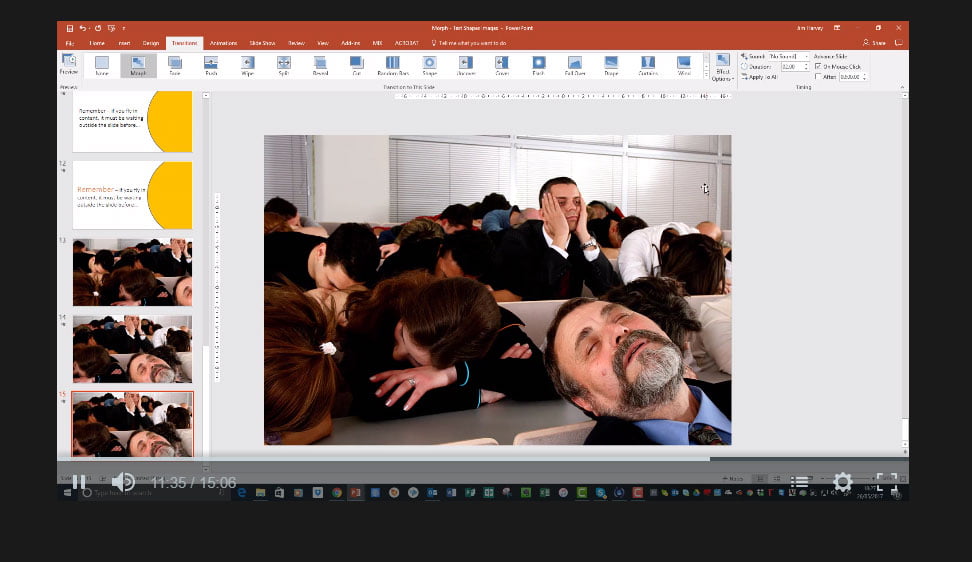
Credit: www.presentation-guru.com
Common Mistakes To Avoid
Transition is an essential aspect of any presentation. It helps to connect ideas, guide the audience through different points, and keep them engaged. However, when it comes to transitions, there are common mistakes that presenters should be aware of and avoid. To ensure a smooth and impactful delivery, it is crucial to steer clear of these pitfalls. In this article, we will explore some of the most common mistakes to avoid in transition, so you can effectively connect ideas and maintain a captivating presentation flow.
Overuse of Transition Words
Transition words play a vital role in linking ideas and guiding the audience through your presentation. However, overusing transition words can be more detrimental than helpful. Constantly repeating words like “however,” “on the other hand,” or “furthermore” can easily distract your audience, making the presentation seem repetitive or lacking in creativity. It’s important to use transition words sparingly and opt for alternative ways to connect ideas and maintain a natural flow.
Causing Distraction or Repetition
Transition should seamlessly guide the audience from one point to another, without causing any distractions or repetition. When transitions are abrupt or too flashy, they can divert the audience’s attention from the core message of the presentation. Likewise, repeating the same transition style or effect throughout the entire presentation can become monotonous. Remember that transitions should enhance your content, not overshadow it.
Disrupting the Natural Flow of Speech
While transitions are meant to smoothly connect ideas, they should never disrupt the natural flow of your speech. If your transitions are too lengthy or convoluted, they can interrupt the overall coherence of your presentation. It’s important to keep transitions concise and straightforward, allowing your speech to flow naturally and effortlessly. This way, your audience can better absorb the information you’re delivering.
Lack of Coherence
Coherence is crucial for a successful presentation. Without a clear connection between ideas, your message can easily get lost or muddled. Transitions should serve as a bridge between your points, providing a logical progression and ensuring that your audience can easily follow along. Avoid the mistake of presenting disjointed or unrelated ideas by using transitions that aim to establish coherence and clarity.
Failure to Connect Ideas Effectively
One of the main purposes of transitions is to connect ideas effectively. However, this can be a challenge if transitions are not thoughtfully chosen or used. Each transition should serve a purpose and seamlessly move the audience from one point to another. By failing to connect ideas effectively, you risk losing the attention and interest of your audience. Be intentional with your transitions, ensuring they successfully bridge the gap between ideas and maintain the overall flow of your presentation.
Confusing the Audience with Abrupt Transitions
Abrupt transitions can leave the audience feeling confused and disconnected from your presentation. When transitioning from one point to another, it’s important to provide a smooth and logical progression. Abrupt transitions can make it difficult for the audience to follow your presentation, leading to disengagement. Be sure to transition in a manner that helps your audience effortlessly navigate through your content, making it easier for them to absorb and retain the information.
In conclusion, transitions can make or break a presentation. By avoiding common mistakes such as overusing transition words, causing distraction or repetition, disrupting the natural flow of speech, lacking coherence, failing to connect ideas effectively, and confusing the audience with abrupt transitions, presenters can ensure a smooth and impactful delivery. Remember, transitions should enhance your presentation, guiding the audience and keeping them engaged throughout.
Final Thoughts On Transition In A Presentation
Transition is a crucial aspect of delivering an effective presentation. It plays a significant role in enhancing the quality of audience comprehension and engagement. By incorporating the right strategies and techniques for seamless transitions, presenters can ensure that their message is delivered smoothly and coherently. In this final section, we will delve deeper into the importance of transition in presentations and provide some tips to help you master this critical skill.
Transition as a crucial aspect of effective presentations
In any presentation, the way you transition between different ideas and sections can make a world of difference in how your audience perceives and retains your message. Smooth transitions help to create a cohesive flow, allowing your audience to follow your line of thought effortlessly. On the other hand, abrupt or confusing transitions can result in disengagement and loss of comprehension.
Imagine you’re attending a conference, and the speaker abruptly shifts from discussing one topic to another without providing a clear link. This sudden change can leave the audience feeling lost and disconnected from the presentation. In contrast, well-executed transitions bridge the gap between ideas, providing a natural progression that keeps the audience engaged and focused.
Enhancing the quality of audience comprehension and engagement
Effective transitions not only help with audience engagement but also greatly improve comprehension. When you provide clear cues and signals to indicate a shift in ideas or topics, your audience can mentally prepare and anticipate the upcoming information. This mental preparation allows them to process the new information more effectively, resulting in a deeper understanding of your message.
Analogously, the absence of smooth transitions can leave your audience feeling confused or disoriented as they struggle to keep up with the sudden shifts in content. This confusion hinders their ability to absorb and comprehend the information you’re trying to convey, undermining the effectiveness of your presentation.
Incorporating the right strategies and techniques for seamless transitions
To ensure seamless transitions and maintain a coherent flow throughout your presentation, there are several techniques you can employ. Firstly, consider using signposting phrases or keywords to alert your audience to the upcoming transition. Examples of such phrases include “Moving on to…”, “Now let’s turn our attention to…”, or “This leads us to our next point…”. These simple cues allow your audience to mentally prepare and follow your train of thought more easily.
Secondly, it’s essential to establish logical connections between ideas. Use transitional phrases that link the previous information to the next, such as “Similarly”, “In contrast”, or “Moreover”. These phrases create a smooth bridge between ideas, enabling your audience to make connections and understand the relationship between different concepts.
Additionally, consider the use of visual aids and body language to reinforce your transitions. Utilize slide transitions, animations, or physical movements to direct your audience’s attention and visually guide them through your presentation. These non-verbal cues act as powerful signals for shifts in content, complementing your verbal transitions and making them more effective.
Finally, practice is key. Rehearse your presentation multiple times, paying special attention to your transitions. By familiarizing yourself with the flow of your presentation and polishing your timing, you can deliver seamless and impactful transitions that captivate your audience.
In conclusion, mastering the art of transition in a presentation can significantly enhance your ability to engage and communicate effectively with your audience. By employing the right strategies and techniques, you can ensure that your transitions are seamless, improving comprehension and creating a cohesive flow throughout your entire presentation.
Frequently Asked Questions For Transition In A Presentation
What Is A Good Transition In Presentation?
A good transition in a presentation is a concise way to move smoothly from one topic to another, keeping your audience engaged.
What Is An Example Of A Transition In A Presentation?
An example of a transition in a presentation could be “Moving on to our next point. “
What Is A Good Transition Example?
A good transition example is when a paragraph seamlessly connects to the next, smoothly guiding the reader through the content.
How Do You Transition Between Slides In A Presentation?
To transition between slides in a presentation, simply click on the next slide thumbnail or use the arrow keys on your keyboard.
Conclusion
After reading this blog post, it is evident that transitions play a crucial role in delivering effective presentations. By using transitional phrases, clear visual cues, and consistent body language, presenters can smoothly guide their audience through each point and keep them engaged.
These transitions not only help maintain the flow of the presentation, but also enhance comprehension and retention of the information being presented. By implementing these strategies, speakers can create a seamless and professional presentation that captures the attention of their audience from start to finish.
Remember to practice and rehearse your transitions to ensure that they are smooth and well-timed. With the right transitions, your presentation will not only have a greater impact but also leave a lasting impression on your audience. So, keep these tips in mind and take your presentation skills to the next level!
